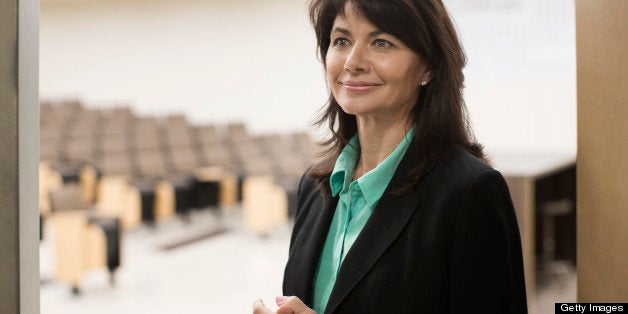
Melissa Bruninga-Matteau is a single mother who relies on food stamps and Medicaid to survive. Her take-home pay is $900 a month, of which $750 goes to rent and $40 goes to gas. Where does she work? If you're thinking a fast food chain, think again. She's a PhD who teaches humanities courses at a state college in Arizona.
"I find it horrifying that someone who stands in front of college classes and teaches is on welfare," she told the Chronicle of Higher Education in 2012. The only thing worse than being an underpaid professional is shouldering an even higher debt load than your average college graduate. According to the National Center for Education Statistics, the total tab for a typical doctoral program will range from $242,000-$300,000.
Part of Bruninga-Mattaeu's dilemma is driven by shrinking state budgets. But it isn't just the public sector that's squeezing academic pay. Elite private schools have saved money by increasing the number of adjunct professors, who because their jobs aren't permanent or full-time their teaching load is below the minimum required to qualify for health care coverage, retirement benefits or unemployment benefits. Incredibly, the majority of professors in the U.S. are benefit-deprived. According to the American Association of University Professors, 70 percent of college faculty work outside the tenure track. So they likely wind up working at multiple employers but still getting no benefits.
What's baffling about the stinginess is that many private colleges are rolling in bucks. The nation's richest universities have endowments ranging from nearly $6 billion to more than $30 billion -- with Harvard University leading the ranks with more than $32 billion. And these endowments are being boosted by the outrageous interest rates on Sallie Mae loans. There's also been a boost in tuition revenues, give that enrollment increased 38 percent between 1999 and 2009 alone.
So professors are taking matters in their own hands and forming unions. Over all, about a fourth of the nation's full-time faculty members and about a fifth of its part-time faculty are now represented by collective-bargaining units.
Maria Maisto leads the New Faculty Majority, a national voice for adjuncts. She says the current economic downturn has increased financial stress on her adjunct colleagues:
I have a colleague whose house is going to be foreclosed on... She is older and is living in fear that she will soon no longer be offered assignments in favor of younger adjuncts. She -- and most of us -- have no retirement to speak of. Many adjuncts have declared bankruptcy, gone on public assistance and been homeless. Those who don't usually depend on extended family, like I did when my husband lost his job and I had to try to support a family of 5 on an adjunct's wages.
It was Anne McLeer's own experience as an adjunct professor at George Washington University that inspired her to not only start a union but help lead one: SEIU's Local 500's higher education work.
Before I started teaching I was a grad student with a 20-hour a week job as an administrative assistant to one of my dissertation advisers. I was considered "permanent part-time staff" and had access to a retirement plan -- they put in up to 10 percent of my salary into TIAA-CREF -- and access to a health plan. The day I gave up that job and I started teaching, which you would think is closer to the mission of the university, I became a `temporary part-time person' with absolutely nothing.
McLeer reached out to the SEIU, with the result that the Local 500 now represents 1,000 part-time faculty at George Washington University, 650 at American University, 900 at Montgomery College and 600 at Georgetown University. At GWU and American they've achieved much higher rates of pay and created more job security by making it more difficult for management to dismiss adjuncts for no reason.
If you're an adjunct or have family or friends who are adjuncts, I'd urge you to reach out to the SEIU. I'll admit that I'm biased in favor of them because they are also working on improving retirement security for everybody, as I am, but they're also the fastest growing union because they're willing to wage tough battles for a just cause. If you're interested, go their webpage: www.seiu.org and click on the link under Take Action that says Form a Union Where You Work and fill out the form here.